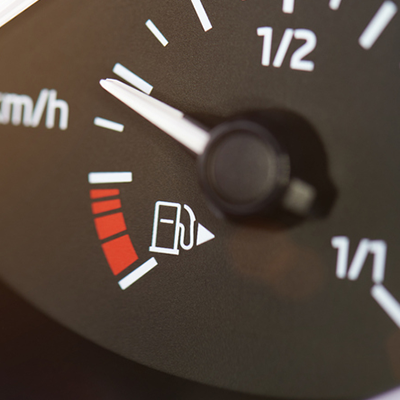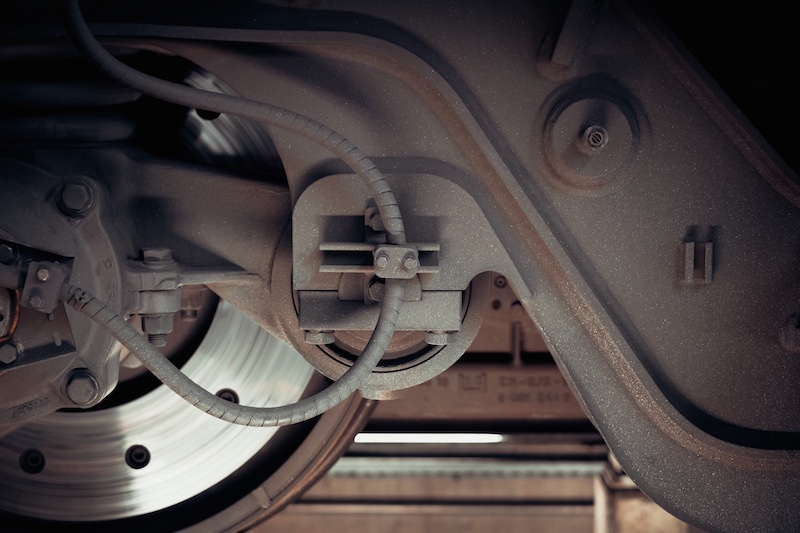It's okay, you can admit it. Back-to-school season is a mixed bag of emotions—you'll miss them, but you might also feel a tinge of excitement! It's complicated. But don't let an unreliable vehicle create an additional layer of anxiety as summer winds down. Instead, teach your child some important back-to-school vehicle preparations that will be a win for everyone. You'll have greater peace of mind, your child will get a nice boost of confidence and pride in learning new skills, and you'll help that vehicle stay in tip-top shape for the school year.
Luckily, some of the most essential maintenance jobs safety checks are great for a beginner's skill level. Here's a handy checklist of small projects you can tackle together in just one weekend.
Basic Tips for Safe Driving
No, this can't substitute the coursework and testing you have to do, but it is a good refresher.
Mirrors
If you're sharing the car with someone, check your mirrors before you drive. The last thing you want is to be fixing your rearview mirror on the highway.
Car Distance
My mother would tell me, “the faster you're going, the more space you need between you and the car in front of you." This is known as the three- to four-second rule, which means you should have three to four seconds to brake should the car ahead of you stop or slow down. Keep in mind that this only applies in good weather — always be more cautious in snow, ice, rain, etc.
Signaling
Do it! There is nothing more frustrating than being behind a car that suddenly makes a lane change with no warning. Be courteous to your fellow drivers on the road by letting them know your intentions.
Intersections
Check the intersection by looking left and right before going through it. Even if you have the go-ahead, you never know when someone is going to speed through a red light.
Drive Defensively
This means not trusting other drivers. Anyone on the road around you may be distracted, under the influence, have bad vision, etc. Stay aware of your surroundings so that if someone swerves or brakes suddenly, you can be ready to take action.
Emergency Vehicles
Proper etiquette is to pull off to the side and stop to let them through. It's what you would want if they were on their way to help you.
Bad Weather
Rain
Drive slower and review what to do if you hydroplane.
Snow or Ice
Hunker down at home and avoid going out, but if you must, make sure your windshield, other windows and roof are fully clear. Blind spots will only be worse if there's snow in the way. Also, go SLOW! Black ice is practically invisible, so you'd rather be going 20mph than 50mph if you hit it. If you regularly need to drive in snow and ice, make sure your car is equipped with winter tires.
Know Your Local Laws
Right on red, for example, isn't legal everywhere. Make sure you keep up with the laws in your area, and if you go on vacation somewhere, make sure you're not assuming the rules.
Get Off Your Phone
As tempting as it might be, don't use your phone while driving! Allowing your phone to distract you is incredibly dangerous. Things on the road can change in a matter of seconds, and if you're distracted, you won't have the reaction time to avoid danger. Some places even have laws against it, so you'll want to avoid getting a ticket.
Vehicle Must-Haves
There are obvious things such as important documents like vehicle registration and the owner's manual, an emergency kit, an umbrella, etc. May we also suggest the following:
- Tissues or napkins for those inevitable drink spills
- Hand sanitizer to clean your hands after gassing up
- A plastic grocery bag as a makeshift trashcan to keep things tidy
- A phone charger
- Sunglasses for bright days
For more tips, check out our top 10 car essentials for new drivers.
Car Maintenance: Beginner DIY Projects
A vehicle is like a pet — it needs food, water and maybe this isn't a good analogy. The point is that your car requires upkeep on a regular basis. This can feel overwhelming (and may sound like lots of money out of your pocket), but we'll break it down for you.
Our full maintenance guide will walk you through what to check and how often, so let's discuss what you could do in your garage.
Starter DIY's
There are definitely some things you can do yourself — trust me! Even if you've never been a big car person, getting under the hood will really boost your confidence. Here are some easy places to start.
Fill Up the Gas
I hear you say, but this is an important one. Here's a life hack for you: that little arrow next to the gas gauge symbol points to which side of the car your gas tank is on!
Air in Your Tires
Having the proper air pressure in all four tires is important for keeping them in good condition and for having good gas mileage. There are several methods for this:
- Pumping by hand (difficult, but a good arm workout)
- Electric pump or air compressor
- The air pumps at the gas station
We think you should go with the third option, so you get used to it. Gas stations are pretty much everywhere in the case of an emergency; your garage is not. Also, be sure to check on your spare tire every six months (or at least once a year) because a flat spare is pretty useless.
Topping Off Fluids
Your car runs on liquids other than gasoline, and they need to be checked and topped off every now and again. If you're up for a real challenge, ChrisFix will gladly show you how to change every fluid in your vehicle. For now, though, let's stick with the easy ones you can check altogether.
- Wiper fluid — check every month or every 1,000 miles. You want your view of the road to be nice and clean! All you have to do is pop the hood, find the wiper fluid cap and pour it in until it's full.
- Oil — check every month or every 1,000 miles. Engine oil keeps your engine running smoothly by lubricating its multiple moving parts. Changing your motor oil should take you less than an hour.
- Coolant — check every month or every 1,000 miles. Coolant (aka antifreeze) keeps your engine from overheating during operation and prevents it from freezing up in cold weather. Flushing the radiator and changing the coolant can be done in the afternoon (and most of that time can be spent scrolling on your phone).
PRO TIP: Make sure the engine is completely cool when you check your vehicle's coolant levels.
Cabin Air Filter
You want to breathe clean air while you're driving, right? That's up to your cabin air filter. It's typically on the passenger side behind the glove box. Changing it is as easy as figuring out how to open the compartment, taking out the old filter and popping in a new one.
Wash and Wax
There's no shame in going to the drive-through car wash, but there's something special about a hot day and the sense of pride you have afterward. Watch Youtube star ChrisFix walk you through how to wash your car and always remember to start from the top down! He also teaches you how to clean the interior if you want bonus points.
Bigger Projects and Beyond
Unless you're a car junkie, there are certain things you should leave to the professionals. So when the dreaded check engine light comes on, don't panic and think you now have to be a professional mechanic! The pros are there for that, and Advance can help you find a mechanic quickly.
If the easier DIY jobs have you interested, though, you can also check out these intermediate-level how-to's:
- Change oil and oil filter — takes about 30 minutes
- Rotate tires — takes about one hour (go ahead and work on this while the oil is draining)
- Replace headlight bulbs — takes anywhere from 5 to 30 minutes depending on the type of bulb and location
- Replace wiper blades — takes 15 minutes
- Replace battery — takes about 30 minutes
Keep in mind that Advance Auto Parts also has several free curbside services, including battery testing and installation, check engine light scanning, wiper blade installation and more.*
*Services available at most locations
Our Well Wishes
Getting behind the wheel is a big (and exciting) responsibility! Keeping up with everything can feel overwhelming, but don't worry — your local Advance store is happy to be a resource for your questions and vehicle needs. Have fun driving and stay safe!









